LaTeX templates and examples — University of Tokyo
Recent
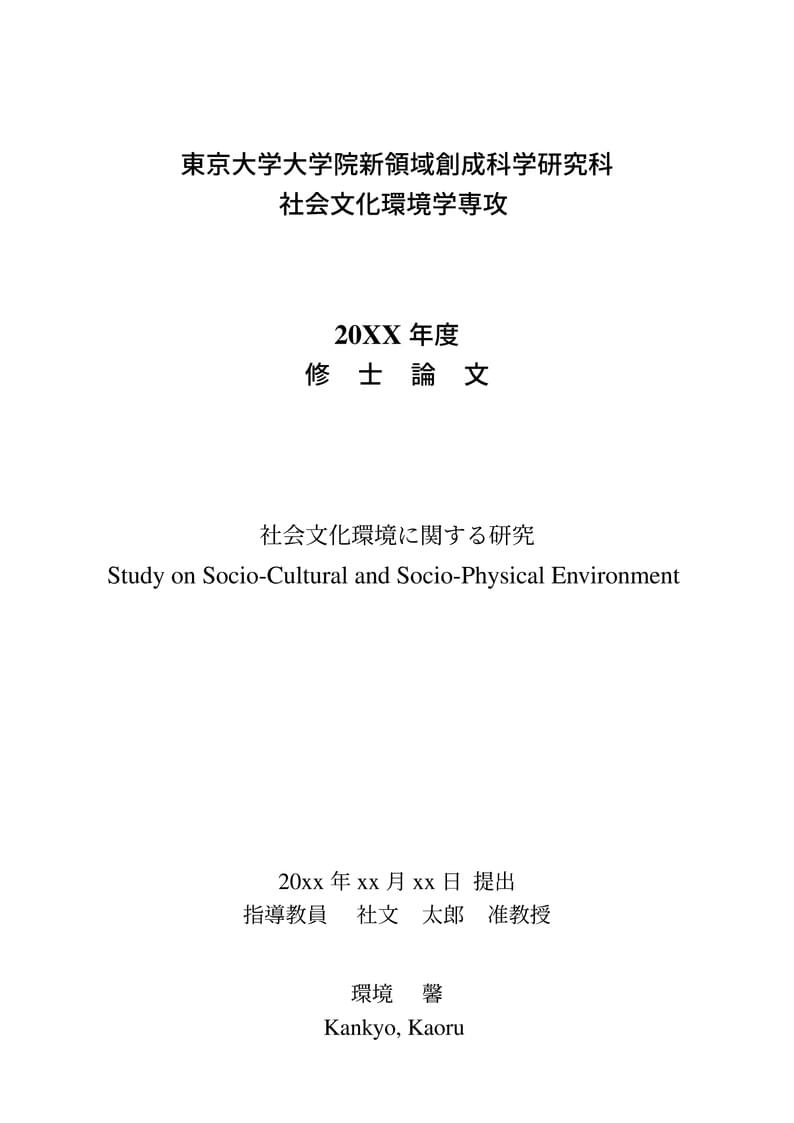
東京大学大学院新領域創成科学研究科社会文化環境学専攻の修士/博士論文のWordテンプレートを学生有志がOverleaf対応させた非公式テンプレートです。
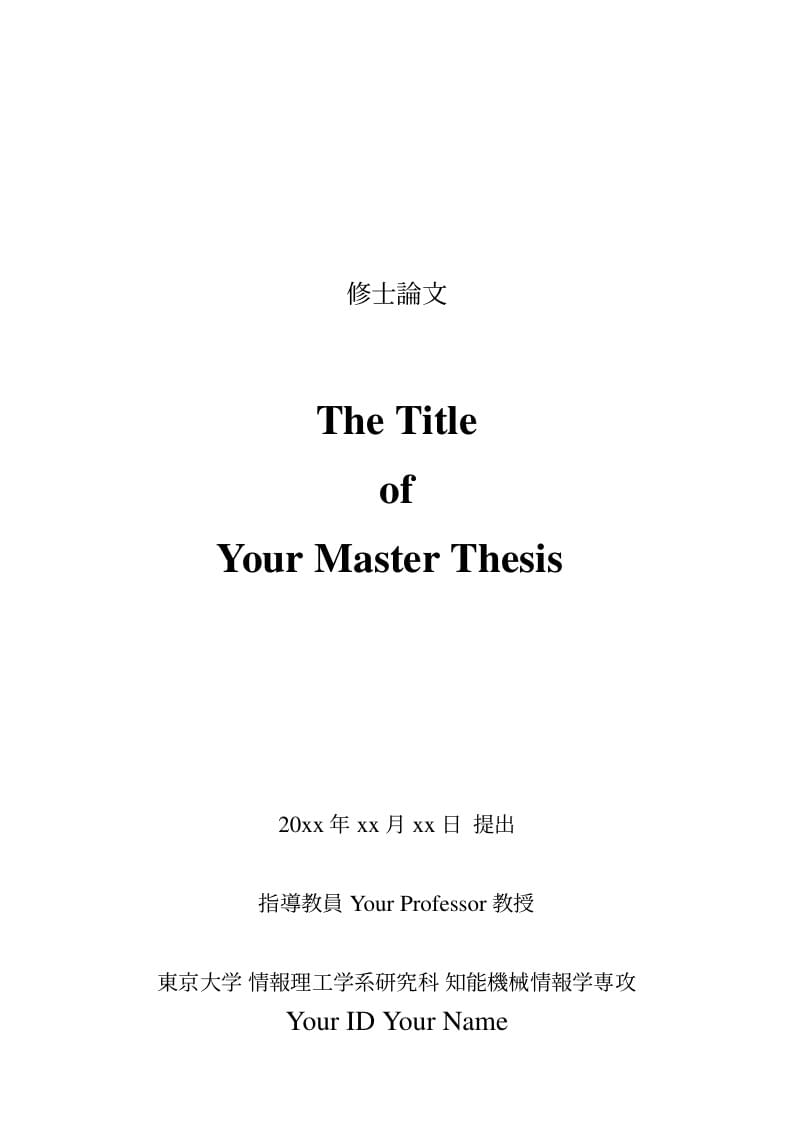
A template for thesis of Department of Mechano-Informatics, Graduate School of Information Science and Technology, The University of Tokyo.
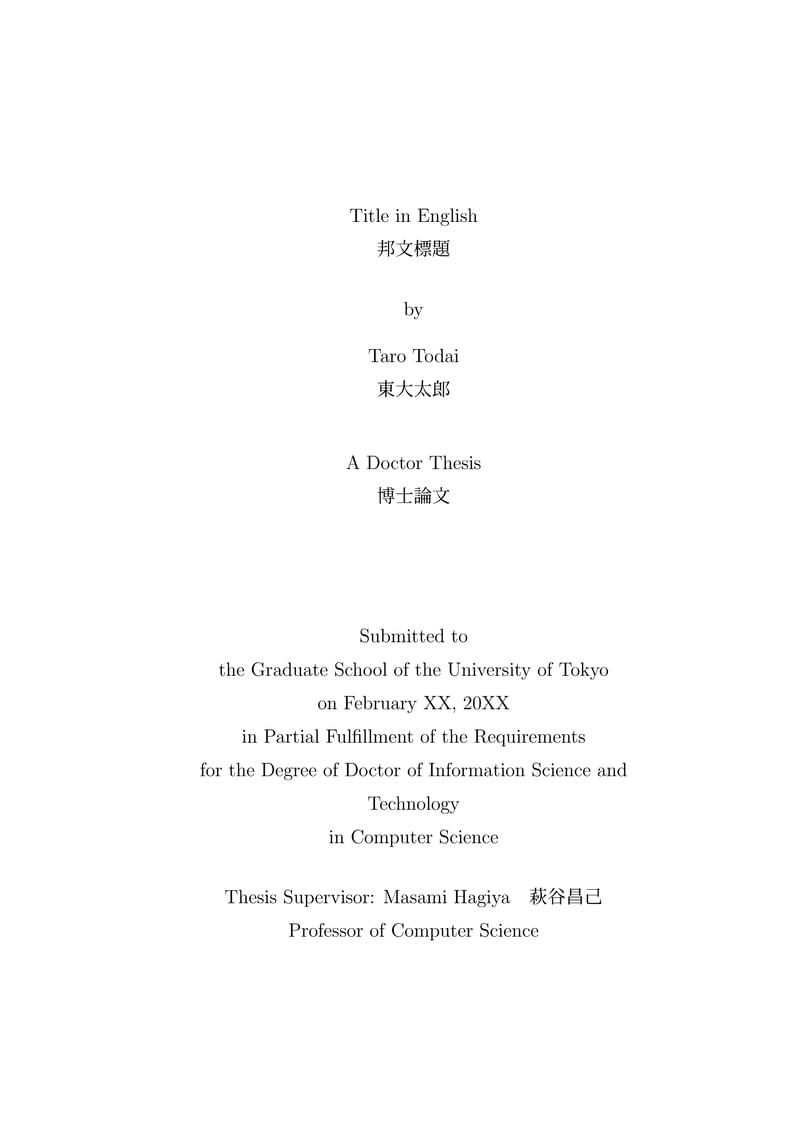
東京大学大学院情報理工学系研究科コンピュータ科学専攻 博士論文をを組版するためのドキュメントクラス iscs-thesis (v1.3) を Overleaf に対応させたものです。
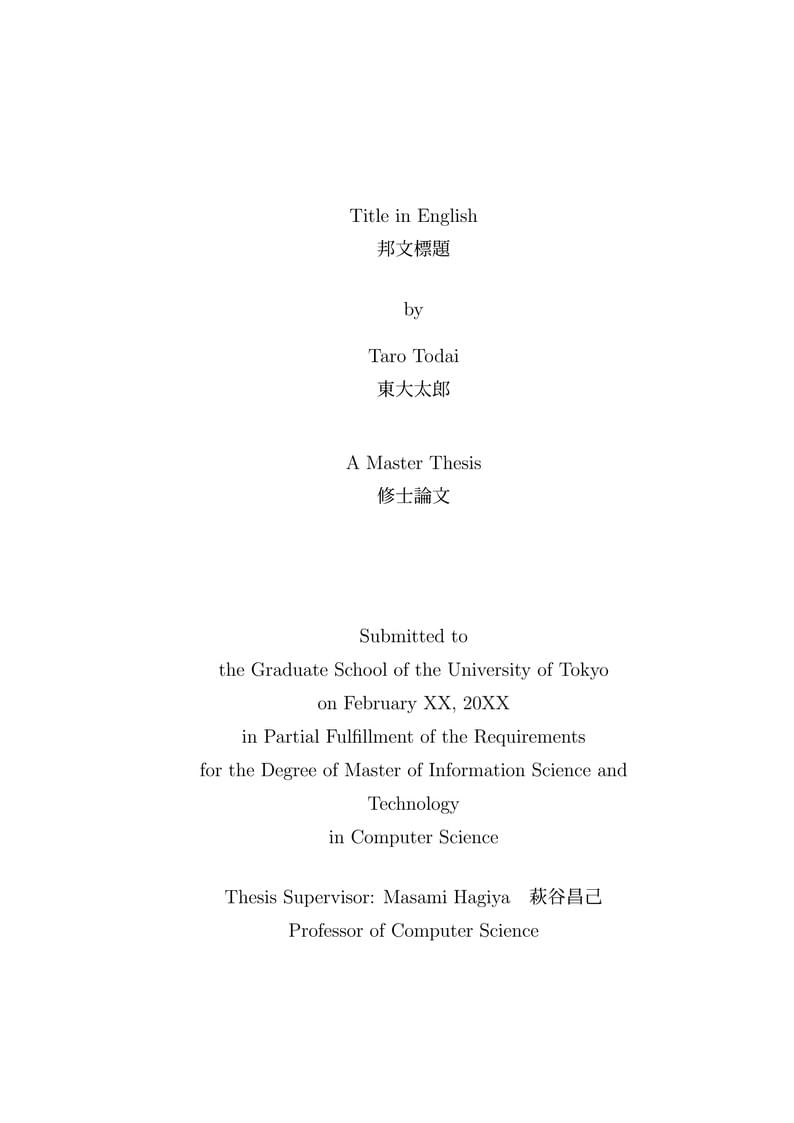
東京大学大学院情報理工学系研究科コンピュータ科学専攻 修士論文を組版するためのドキュメントクラス iscs-thesis (v1.3) を Overleaf に対応させたものです。
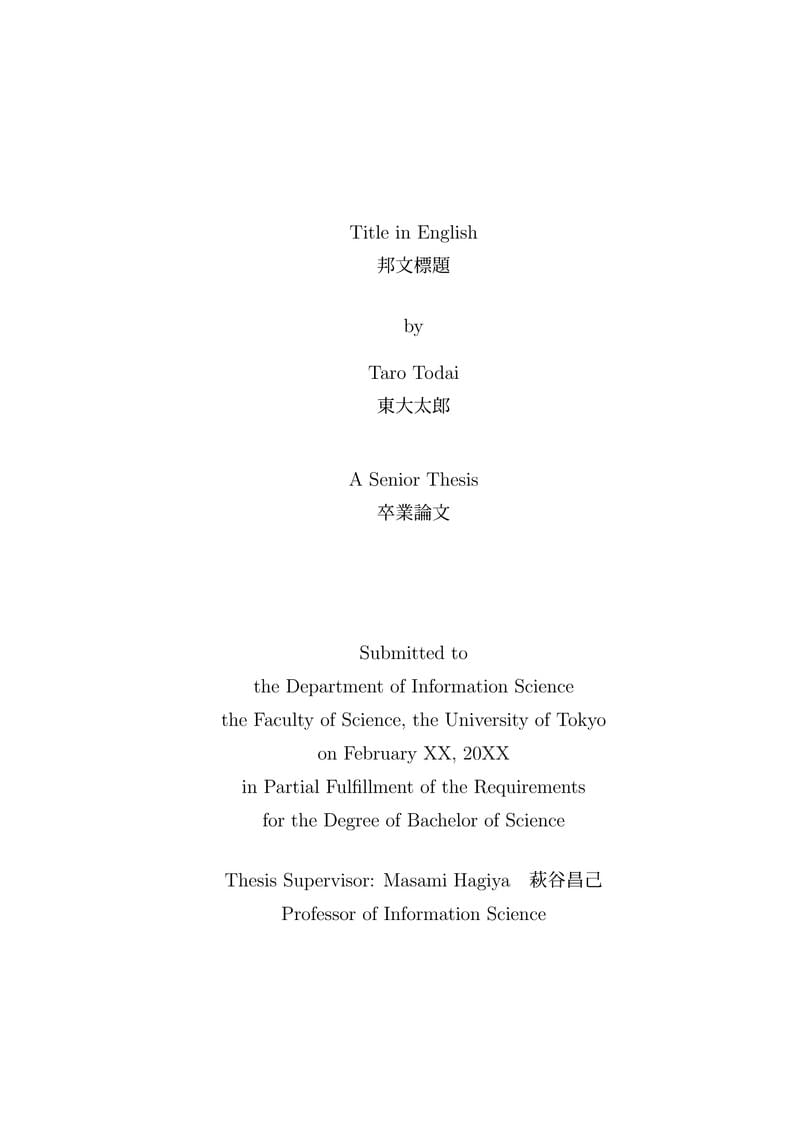
東京大学理学部情報科学科の学位論文を組版するためのドキュメントクラス iscs-thesis (v1.3) を Overleaf で使えるようにしたものです。
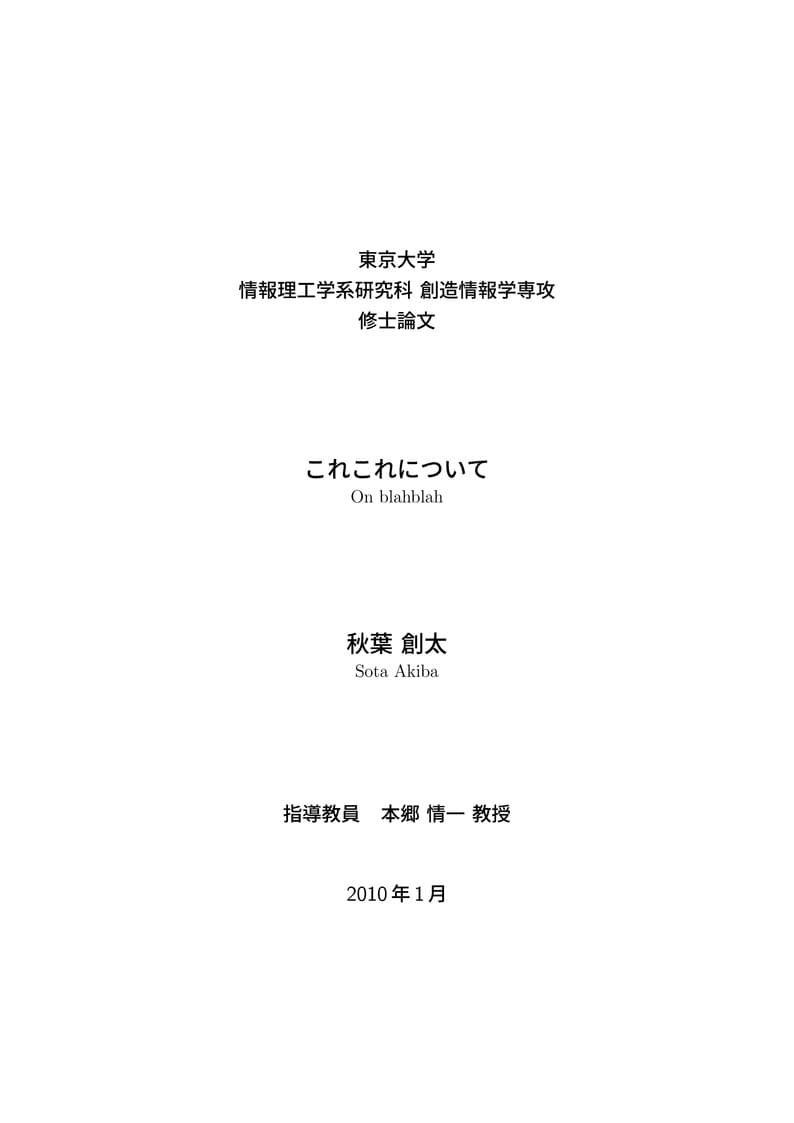
東京大学大学院情報理工学系研究科創造情報学専攻修士論文フォーマット(2021年/日本語版)を、学生有志がOverleafに対応させたものです。This is the master's thesis format (2021/Japanese version) of the Department of Creative Informatics, Graduate School of Information Science and Technology, the University of Tokyo, adapted to Overleaf by student volunteers.

社会文化環境学専攻修士論文要旨のフォーマット, Overleaf対応させた非公式テンプレートです It is made by students and not official.
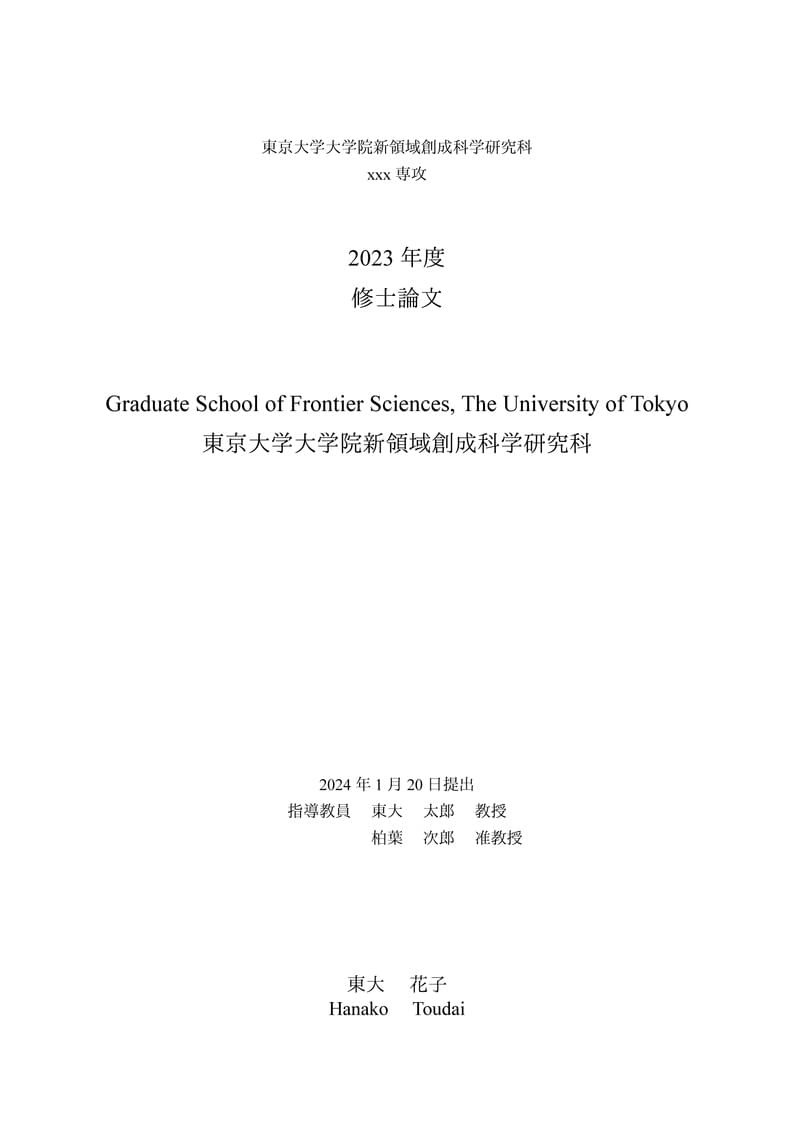
A unofficial master thesis template for the Graduate School of Frontier Sciences, The University of Tokyo.
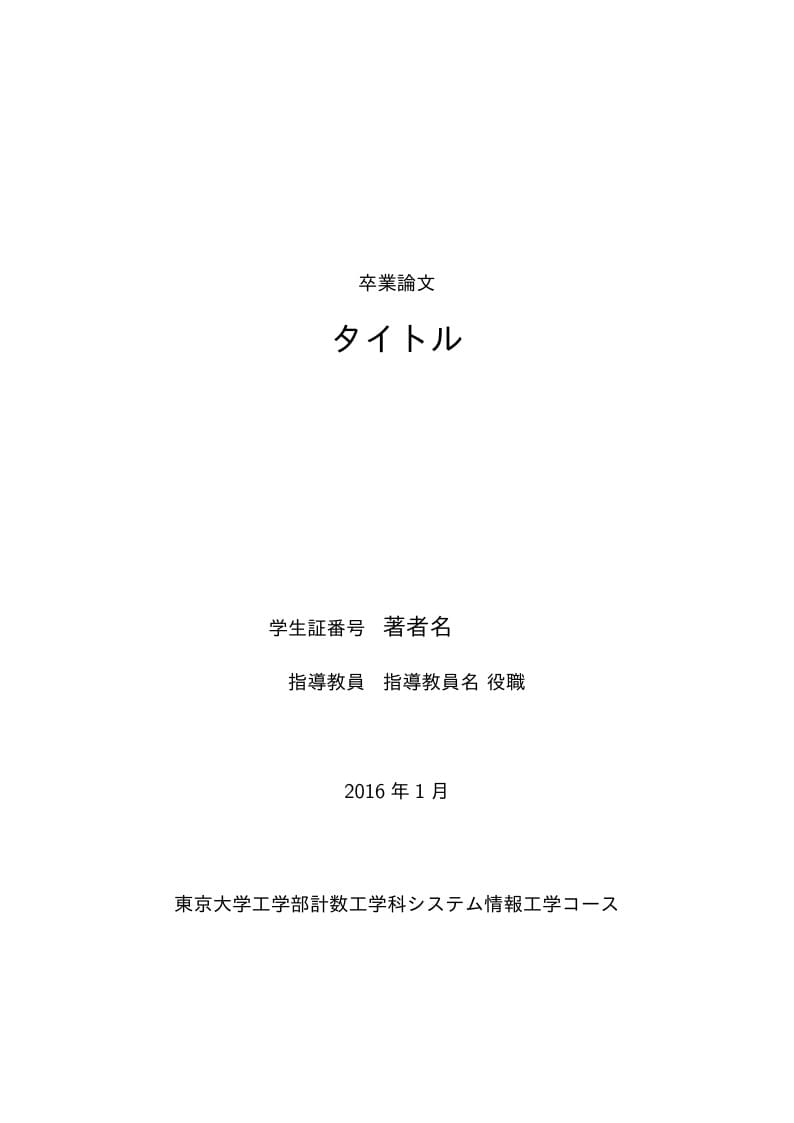
計数工学科システムコースの卒論のテンプレートです。 https://qiita.com/yokotech/items/4e98f75caf7b52282b19 に従って作業を行ったものをここにおいています。
\begin
Discover why over 20 million people worldwide trust Overleaf with their work.